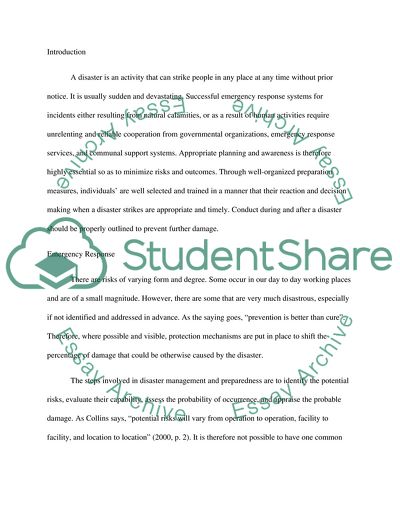Cite this document
(Emergency Response (Disaster Response and Recovery) Research Paper, n.d.)
Emergency Response (Disaster Response and Recovery) Research Paper. https://studentshare.org/medical-science/1832255-disaster-planning-and-preparation
Emergency Response (Disaster Response and Recovery) Research Paper. https://studentshare.org/medical-science/1832255-disaster-planning-and-preparation
(Emergency Response (Disaster Response and Recovery) Research Paper)
Emergency Response (Disaster Response and Recovery) Research Paper. https://studentshare.org/medical-science/1832255-disaster-planning-and-preparation.
Emergency Response (Disaster Response and Recovery) Research Paper. https://studentshare.org/medical-science/1832255-disaster-planning-and-preparation.
“Emergency Response (Disaster Response and Recovery) Research Paper”. https://studentshare.org/medical-science/1832255-disaster-planning-and-preparation.


